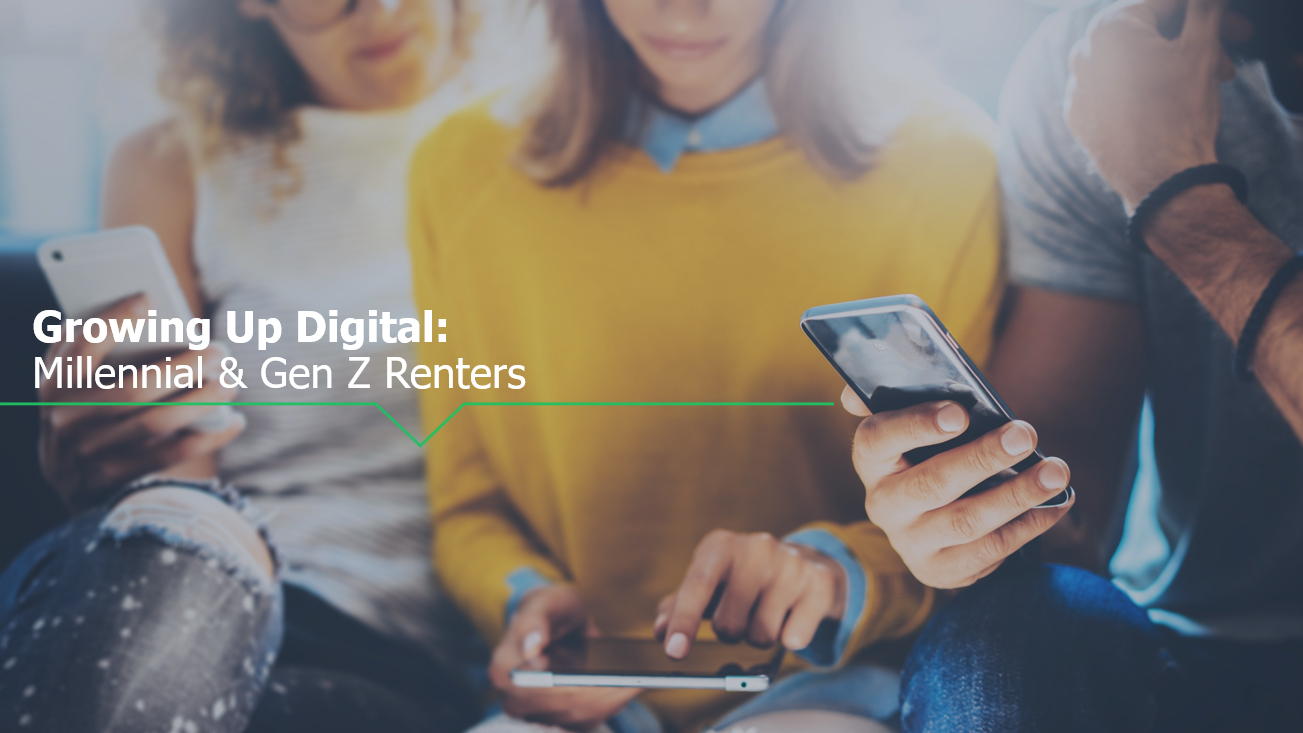Growing Up Digital: Surprising Differences Between Millennial and Gen Z Renters

October 5, 2017
2 min read
To learn all about the generational differences between Gen Z and Millennial renters and find ways to appeal to each of these groups, download our new report: Growing Up Digital.
Two generational cohorts dominate today’s rental population: millennials (ages 24-38) and their up-and-coming younger siblings, Gen Z (which includes adults ages 18-23). Together, these cohorts comprise 65% of all renters in America. While millennials have been the marketing darlings for the last several years, Gen Z (which also includes minors as young as 8) already accounts for 21%¹ of the American population and is expected to have a population share similar to that of millennials by 2020.²
While both groups are digitally savvy, mobile-first and research-heavy housing shoppers, their differing preferences mark a generational divide. These differences present opportunities for multifamily marketers to connect with each generation on a deeper, more personal level.
Here are just three of the differences between millennial and Gen Z renters.³
1. Your response time matters more to millennials
Don’t keep millennials waiting when they contact you. Nearly three-quarters of millennial renters (72%) expect your response within one day or less. Gen Z renters, on the other hand, are a little more patient: 63% expect to hear from you within a day. They're also more willing to pursue a listing — 60% of Gen Z renters will follow up with a call or email, while only 50% of millennial renters will do so. More than a fourth of all renters (28%) will leave you in the dust if they don’t hear back from you promptly.
2. They part ways over home types
Gen Z, with its relatively limited rental and credit history, tends to gravitate toward apartments — regardless of the size of the building or complex. Nearly three-quarters (74%) of Gen Z renters consider apartments, compared with 58% of millennial renters. But Gen Z renters are more likely to check out midsize apartment buildings with 10 to 49 units: 41% of Gen Z renters consider them, compared with 26% of millennial renters.
A fully furnished home doesn’t appeal to most renters; only 8% of renters select one. But 21% of all renters sign leases for homes that are partially furnished. More than half (52%) of Gen Z renters choose a partially or fully furnished home, versus 27% of millennial renters — a sign of their youth and possibly modest means at this age.
3. Millennial renters move farther, Gen Z renters move sooner
The younger the renter, the more likely they are to stick with the familiar: 64% of Gen Z renters moved within the same city versus 53% of millennial renters. Though they spend a lot of time searching for a home and moving in, younger generations might not stick around as long. Nearly a third (32%) of Gen Z renters are already thinking about moving now, compared with 26% of millennial renters.
Be sure to download our report, Growing Up Digital, to see the rest of the differences between these two generations and find out how to bring them to your properties.
Sources:
1. U.S. Census Bureau Current Population Survey Annual Social and Economic Supplement, 2018
2. U.S. Census Bureau Population Projections, 2017
3. Zillow Group Consumer Housing Trends Report 2018
Connect with us!
Learn how Zillow Rentals can help you reach your goals.
Stay informed. Stay ahead.
Access exclusive industry insights, market trends, and expert tips. Subscribe now to receive quarterly Zillow Rentals newsletters!